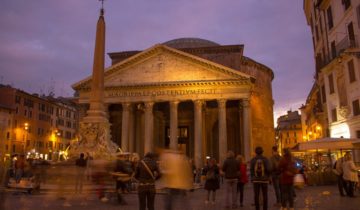Quality travel attractions Hanoi right now: Set on the slopes and clifftops of Huong Tich Mountain, this Buddhist temple complex (also known as Huong Pagoda) with several pagodas is a popular day tour from Hanoi as much for the scenic journey there as to visit the pagodas themselves. After a 60-kilometer drive south from the city, you access the Perfume Pagoda by first taking a one-hour boat ride on a river rimmed with lush karst mountain scenery all along the way to Huong Tich Mountain, and then either taking a cable car with excellent aerial views of the mountains up to the temple complex or hiking your way up the slopes. The pagoda complex is an important place of pilgrimage for Vietnamese visitors, who come here to leave offerings for cures for childlessness and health issues as well as other problems. Discover even more info on Hanoi By Locals.
Behind Ho Chi Minh’s Mausoleum is a humble stilt house, where Ho Chi Minh supposedly lived in the 60s, though some claim that it would have been too risky during the war for him to live here. The house is an interpretation of a traditional rural dwelling, and has been preserved just as Ho left it. It’s set in a well-tended garden next to a carp-filled pond. It shares grounds with the much more luxurious and impressive Presidential Palace built for the French Governor of the Indochina colony in the early 1900’s. The palace is now used for official receptions and isn’t open to the public.
Thang Long Water Puppet Theatre, located along Dinh Tien Hoang Street, comprises 17 short sketches using traditional puppets within a one-hour performance. A Vietnamese orchestra accompanies each story, with musicians playing traditional operatic songs using drums, wooden bells, horns, bamboo flutes and cymbals. Aside from the general admission fee of VND 100,000, there’s an additional camera or video fee if you wish to photograph or film the show. Tickets sell out well in advance so it’s worth booking yours as soon as you arrive in town.
This capital city of Vietnam once served as the headquarters of the North Vietnamese communist army. Today, it provides a beautiful and educational window into a country that is most often visited through the Southern, tropical Ho Chi Minh City, once called Saigon. Where the South is palm trees and beaches, the North is tall, sharp rocky mountains full of waterfalls, deep emerald waters with pearl farms, and a culture that is as unique as it is beautiful. A visit to Hanoi provides travelers with a fascinating blend of East and West. There are bustling streets full of bicycles, motorbikes and cars; an elegant blend of Asian Pagodas, communist block buildings and French Colonial relics; and there are a host of fun and unique attractions in Hanoi for the adventurous traveler.
Hanoi’s most well-known landmark is tranquil Hoan Kiem Lake, nestled just on the southern edge of the old town quarter. The major tourist attraction upon the lake is the small island (reached by a red bridge) that holds Ngoc Son Temple, dedicated to three grand figures from Vietnamese history: La To (revered as a patron saint of physicians); the renowned scholar Van Xuong; and the 13th century general Tran Hung Dao, who fought against the invading Mongol army. Another tiny island on the southern section of the lake holds the stocky Turtle Tower – best viewed from the bridge. Read additional information on Hanoi By Locals.
The Imperial Citadel of Thang Long, is an intriguing relic of Vietnam’s history and, signifying its historical and cultural importance, was made a UNESCO World Heritage Site in 2010. Also known as the Hanoi Citadel, many artefacts and items dating back to between the 6th and 20th centuries were excavated in 2004, including foundations of old palaces, ancient roads, ponds and wells, bronze coins, ceramics and pottery from China and many places in Asia. The ancient site was the political centre of the country for 13 consecutive centuries and served as the capital of Vietnam for eight centuries. A notable attraction in the Imperial Citadel of Thang Long was the Hanoi Flag Tower, a renovated 40-metre-tall stone fortress offering expansive views of Ba Dinh Square and Hanoi City Centre.



